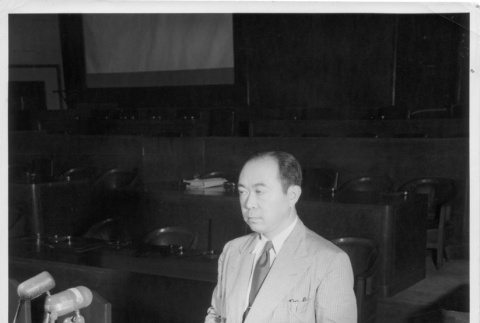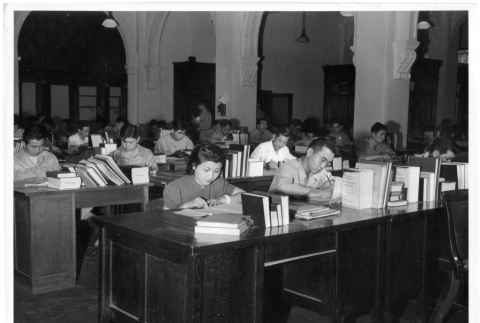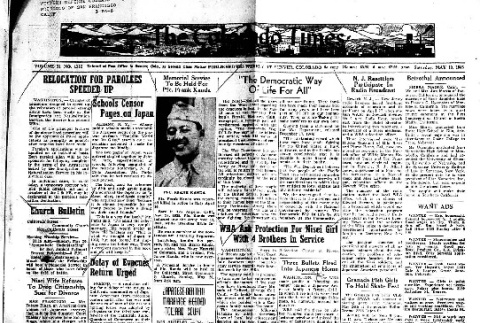4981 items
4981 items

Narrator Hannah Lai
Nisei female. Born April 11, 1923, in Seattle, Washington. Grew up in Seattle, where parents ran a hotel. Went to live in Japan for several years prior to World War II. During the war, removed to the Puyallup Assembly Center, Washington, and the Minidoka concentration camp, Idaho. While in Minidoka, recruited to teach elementary school, and …

Narrator Tetsushi Marvin Uratsu
Nisei male. Born February 7, 1925, in Sacramento, California. At a very young age, sent to Japan for several years. Returned at age six and lived with family in Loomis, California. During World War II, removed to the Arboga Assembly Center, California, and the Tule Lake concentration camp, California. Transferred briefly to the Amache concentration camp, …

Narrator Grace Hata
Nisei female. Born December 5, 1930, in Gardena, California. Grew up in Gardena where parents ran a restaurant. After the bombing of Pearl Harbor, father was arrested and taken away by the FBI. During mass removal, family was sent to the Manzanar concentration camp, California, and reunited with father. Following the Leave Clearance questionnaire in 1943, …

doc
Heart Mountain Sentinel Vol. IV No. 22 (May 26, 1945) (ddr-densho-97-234)
Selected article titles: "Relocation Assistance Will be Facilitated. Eligibility Determination, Early Issuance of Grants Will be Made at Centers" (p. 1), "Ickes Burns Hoodlums for Attacks on Evacuees; Return to Coast Unabated" (p. 1), "Nisei Serving Armed Forces Against Japan" (p. 1), "Seattle Mayor Demands Chief Bring Action" (p. 1), "Negro Moderator Will Speak Here" (p. …
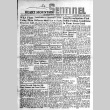
doc
Heart Mountain Sentinel Vol. II No. 17 (April 24, 1943) (ddr-densho-97-125)
Selected article titles: "WRA Plans Using More Evacuee Aid" (p. 1), "Indefinite vs. Seasonal Leaves. Difference Means Lot to Youths" (p. 1), "Shortcomings in Program Said Delaying Evacuee Resettlement" (p. 1), "Local Investigators Find Public Feeling, Conditions in Farm Areas Good" (p. 1), "Hit Snags in Hog Purchase" (p. 2), "Editorial: The Warlords Miscalculate" (p. 4), …
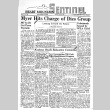
doc
Heart Mountain Sentinel Vol. II No. 28 (July 10, 1943) (ddr-densho-97-136)
Selected article titles: "Myer Hits Charge of Dies Group. 807 to be Cut from Payrolls" (p. 1), "Editorial: Looking Toward the Future" (p. 1), "Falsehoods Scored by WRA Chief" (p. 1), "Grew Declares Common People of Japan Friendly Toward U.S." (p. 1), "Editorial: Facing the Race Problem Squarely" (p. 4), "Independence Day Address: Future of Loyal …

doc
The Pacific Citizen, Vol. 25 No. 6 (August 16, 1947) (ddr-pc-19-33)
Selected article titles: "Report 300 Nisei Veterans, Gis Will Wed Girls in Japan. American Consulate Swamped As Couples Seek to Qualify Under GI Brides Amendment" (p. 1), "Judge Orders U.S. to Release Renunciants" (p. 1), "Masaoka Will Attend Canada Nisei Confab" (p. 1), "New Community Center Planned For Resettlers in Chicago Area" (p. 2), "Greater Emphasis …
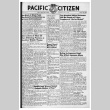
doc
The Pacific Citizen, Vol. 32 No. 17 (May 5, 1951) (ddr-pc-23-18)
Selected article titles: "Two Hundred 442nd Veterans Will Be Guests at Tokyo Premiere of 'Go for Broke!' (p. 1), "Ruling by Supreme Court May Affect Japanese Aliens" (p. 1), "JACL ADC Official to Testify in Favor of Fair Employment Law Before Assembly Group" (p. 2), "California Assemblyman Plans Resolution to Delete Racist Terms in State's Constitution. …

doc
The Pacific Citizen, Vol. 34 No. 1 (January 5, 1952) (ddr-pc-24-1)
Selected article titles: "Supreme Court Sets Aside Ruling Restoring Citizenship to Two Wartime Strandees" (p. 1), "Legal Showdown Nears Over Government Subversives List" (p. 2), "JACL Joins 21 Groups in Suit Over Restaurant Segregation" (p. 3), "Former Seattle Kendo Group Gives Hall to Nisei Veterans" (p. 3), "Minorities and Crime. Opponents of Cultural Diversity Present a …

doc
The Pacific Citizen, Vol. 28 No. 1 (January 8, 1949) (ddr-pc-21-1)
Selected article titles: "Chicago City Agency Will Fight Race Bias in Burials" (p. 1), "Dean Acheson Proud of Role as JACL Counsel in Test Cases" (p. 1), "Truman Reaffirms Civil Rights Program In Talk to Congress" (p. 1), "U.S. District Court Hears Fujizawa's Attempt to Win Recognition of Citizenship. Served as Interpreter During War at POW …

doc
Pacific Citizen, Vol. 49, No. 22 (November 27, 1959) (ddr-pc-31-48)
Selected article titles: "Rule Cal. Campus groups eliminate race bias by 1964" (p. 1), "Li'l Abner cartoon use of 'Japs' charged as 'appalling incident' by Cleveland CLer" (p. 1), "Tacoma Nisei who studied art in Los Angeles, Chicago, Paris settles down in New Mexico; manages nursery, rock landscaping" (p. 3), "U.S. colleges note impetus of students …
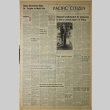
doc
Pacific Citizen, Vol. 67, No. 18 (November 1, 1968) (ddr-pc-40-44)
Selected article titles: "Japan decorates Kido, Dr. Yatabe at Meiji fete" (p. 1), "LeMay's say on A-bomb dismays Hiroshima mayor" (p. 1), "Blaisdell undisturbed by primaries in bid to unseat Spark or Patsy" (p. 1), "JACL protests with Chicago groups on police backlash" (p. 1), "Nisei translator corps of WW2 rated as 'best secret of the …
![Pacific Citizen, Vol. 65, No. 10 [7] (August 18, 1967) (ddr-pc-39-34)](https://ddr.densho.org/media/cache/36/42/3642f162254aecda421af93d387abb0a.jpg)
doc
Pacific Citizen, Vol. 65, No. 10 [7] (August 18, 1967) (ddr-pc-39-34)
Selected article titles: "Sen. Fong Raps State Dept. Ignoring Asian Refugees" (p. 1), "Miss JACL 1968 coronation ball tomorrow enraptures San Jose with Convention fever" (p. 1), "Police Commission Seeking Broader Powers to Limit Parades in L.A. City" (p. 1), "New Jersey school bans Jewish skullcap" (p. 1), "Map makers removing anti-racial names" (p. 1), "Patsy …
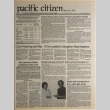
doc
Pacific Citizen, Whole No. 2128, Vol. 92, No. 9 (March 6, 1981) (ddr-pc-53-9)
Selected article titles: "Census shows Asian-Pacific American population doubled" (p. 1), "Court hearing set Mar. 10 for ousted Livingston Nisei teacher" (p. 1), "Nisei vets harassed on S.F. radio talk show" (p. 1), "Benihana workers succeed in first unionizing drive" (p. 2), "Nisei denied malpractice insurance renewal" (p. 2), "KNBC commended for pulling 'Chan' film ads" …
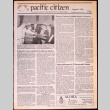
img
Pacific Citizen, Vol. 99, No. 5 (August 3, 1984) (ddr-pc-56-30)
Selected article titles: "'Sixteen Candles' protests taken to Universal" (p. 1), "Fujiyoshi's case supported by defense witness" (p. 1), "'Sixteen Candles': A Dreary Exercise in Asian Stereotypes" (p. 2), "Workshop on Nisei resisters offered" (p. 3), "Summary of Resolutions for Consideration by National Council" (p. 4), "Proposed Amendments to Constitution and Bylaws" (p. 4), "1984 National …

doc
Order battle map, Korean War front line (ddr-csujad-38-500)
A page from: George Naohara scrapbook: Korean War and before leaving Japan (csudh_nao_0600). Includes George Nobuo Naohara's handwritten notes on the Korean War and a newspaper clipping with an image capturing the wounded soldiers. George Nobuo Naohara was one of the wounded soldiers and taken to a field hospital by Capt. Takahashi and Sgt. Miyamoto. See …
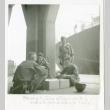
img
Passing the time while awaiting order to board ship to Korea (ddr-csujad-38-450)
Photographed are U.S. soldiers at Kokura Port, waiting for the order to depart for Korea. The caption reads: Passing the time while awaiting order to board ship to Korea. The photo was taken when 24th Infantry Division departed for Korea. Title from caption. Item from: George Naohara scrapbook: Korean War and before leaving Japan (csudh_nao_0600). See …

img
Matsui family (ddr-csujad-25-206)
A page from tthe the Taenaka family photo album. Pasted on the page is a group photograph of the Matsui family. It is taken at the front door of Matsui's house probably in Osaka, Japan on Takako Matsui's wedding day. From the left: Saki, Taka [=Takako], Ukichi, Yone, Harue, Kinoko, and Yanosuke Matsui. See this object …
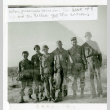
img
U.S. soldiers (ddr-csujad-38-457)
Photographed are U.S. soldiers lining up. The English caption reads: When prisoners come in, line up!, and the toller got the work. Translation of the Japanese caption: All were decided depending on the height of soldiers. Taking a break near Daejeon. Item from: George Naohara scrapbook: Korean War and before leaving Japan (csudh_nao_0600), page 35. See …
![Letter from Kimiye Tanimoto to Mr. and Mrs. S. Okine, October 2, 1947 [in Japanese] (ddr-csujad-5-211)](https://ddr.densho.org/media/cache/22/2a/222a4e565b86a344a518f3bcf5a239e5.jpg)
doc
Letter from Kimiye Tanimoto to Mr. and Mrs. S. Okine, October 2, 1947 [in Japanese] (ddr-csujad-5-211)
A letter from Kimiye Tanimoto to her relatives, Seiichi and Tomeyo Okine. Kimiye is a sister-in-law of the Okine's son, Masao Okine. She recently returned from Japan to the US and is producing grapes in Lodi, California. In the letter, she gives appreciation to Seiichi and Tomeyo for their visit and gifts. See this object in …
![Letter from Satoru [Sasaki] to Seiichi Okine, November 7, 1951 [in Japanese] (ddr-csujad-5-272)](https://ddr.densho.org/media/cache/9a/d7/9ad72a8fa6a88b36284e851d7a73f89d.jpg)
doc
Letter from Satoru [Sasaki] to Seiichi Okine, November 7, 1951 [in Japanese] (ddr-csujad-5-272)
A letter from Satoru Sasaki in Hiroshima, Japan to his uncle, Seiichi Okine. The letter includes general correspondence, informing of his family's well being. Entering the rice harvest season, he has been busy harvesting in the golden paddy fields. He wishes to meet the Okines sometime. The arrival date of the letter, December 7 is recorded. …

av
Interview with Takeshi Kameoka, (audio) (ddr-csujad-56-2)
Sonoma County resident Takeshi Kameoka was interviewed on April 15, 1978, by a Sonoma State University student for the North Bay Ethnic Archive Project. He talks about early life, moving to Japan with his family following father's death, returning to US and taking up vegetable farming. Discusses church as center of Japanese American community. See this …
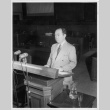
img
Nisei defense attorney in war crimes trial (ddr-densho-114-145)
Original caption: Nisei defense attorney for Tojo, one of the major war criminals to be tried before the International Military Tribunal for the Far East, War Ministry Bldg., Tokyo, Japan, is George Yamaoka, a civil service employee, who stands at the addressing stand. Mr. Yamaoka, who lives in N.Y. City, was attached to the Japanese delegation, …
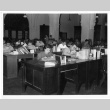
img
Nisei translators (ddr-densho-114-164)
Original caption: Nisei Japanese civilians and soldiers of the U.S. Army, work in the translation and scanning sections, and the Allied translator and interpreter sections, General Headquarters, Allied Forces in the Pacific, located in the NYK Building, Tokyo, Japan. The majority of the personnel working in these sections are Nisei civilians and soldiers, who are responsible …
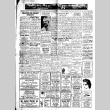
doc
Colorado Times Vol. 31, No. 4312 (May 19, 1945) (ddr-densho-150-25)
Selected article titles: "Relocation for Parolees Speeded Up"; "Nisei Wife Refuses to Drop Citizenship, Sues for Divorce"; "Refuse to Work With U.S. Japanese"; "Schools Censor Pages on Japan"; "Delay of Evacuees' Return Urged"; "Memorial Service to be Held for Pfc. Frank Kanda"; "Japanese-German Marriage Headed Toward Court"; "'The Democratic Way of Life for All'"; "WRA Ask …

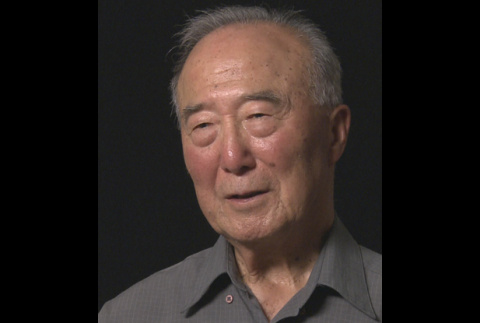
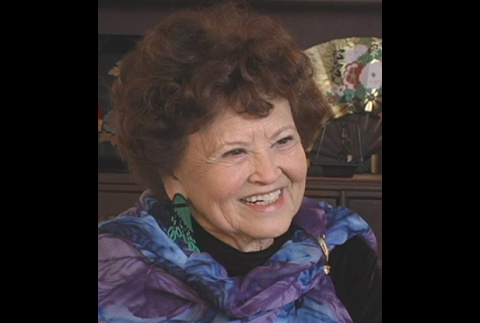
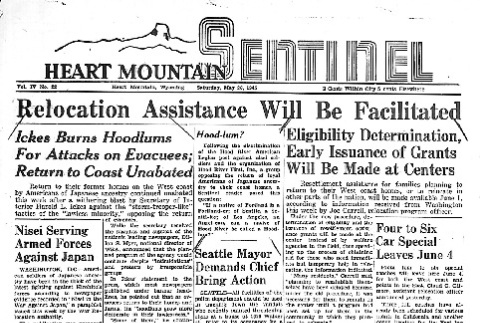
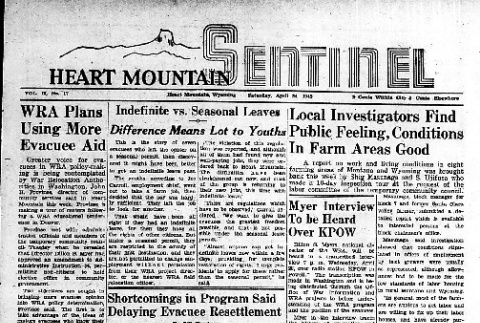
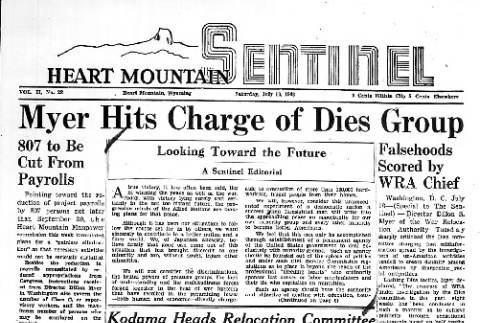
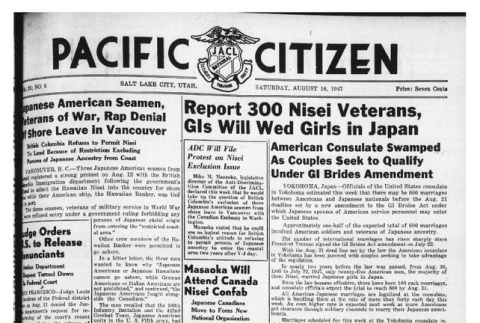



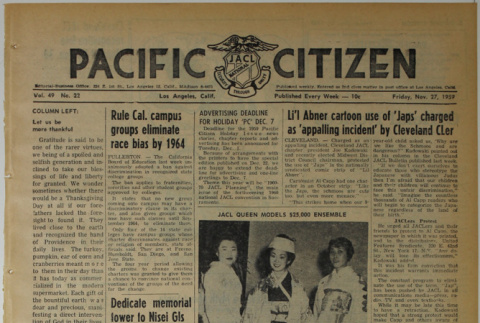
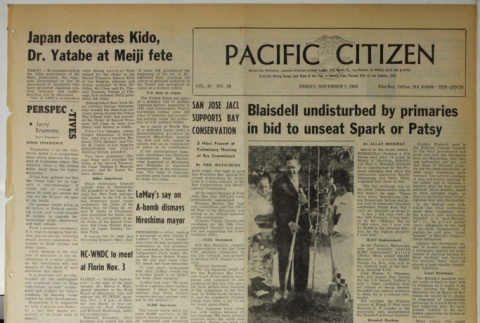
![Pacific Citizen, Vol. 65, No. 10 [7] (August 18, 1967) (ddr-pc-39-34)](https://ddr.densho.org/media/cache/83/3a/833a8485df112fcfdecfb685ea954ba7.jpg)
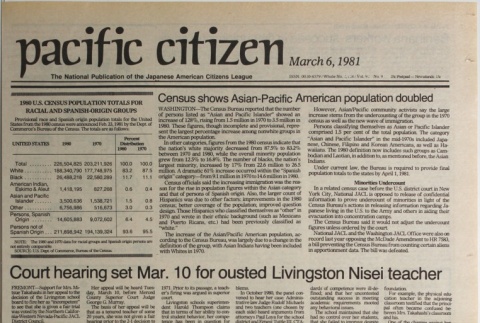

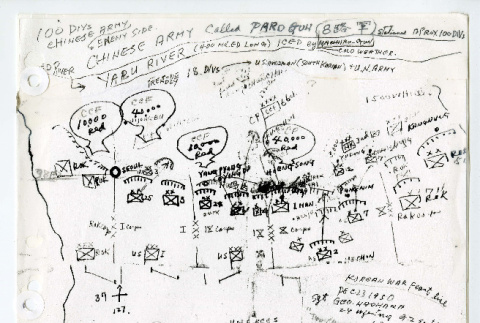

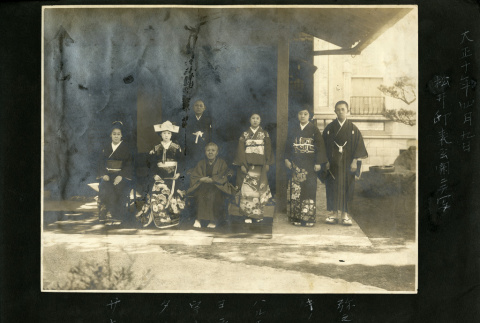
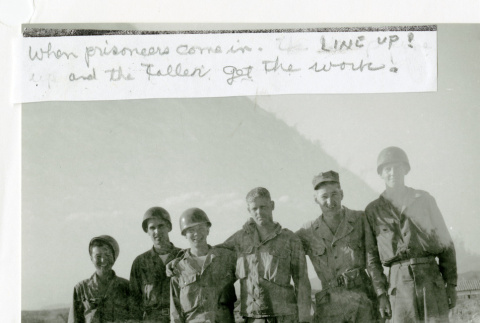
![Letter from Kimiye Tanimoto to Mr. and Mrs. S. Okine, October 2, 1947 [in Japanese] (ddr-csujad-5-211)](https://ddr.densho.org/media/cache/74/da/74dab994c380eb358b1a16e368375be0.jpg)
![Letter from Satoru [Sasaki] to Seiichi Okine, November 7, 1951 [in Japanese] (ddr-csujad-5-272)](https://ddr.densho.org/media/cache/46/d5/46d5aaf38ab8012080f1e68087efb033.jpg)

